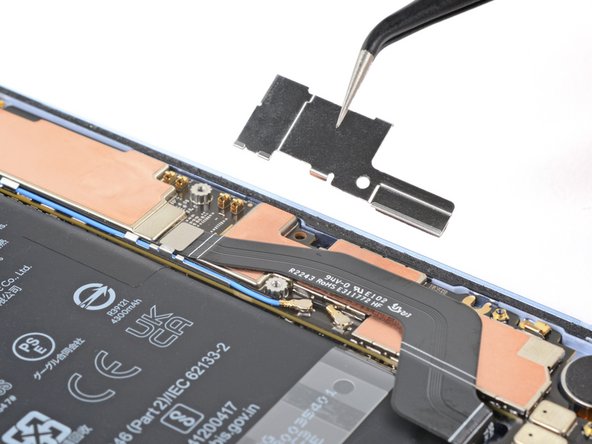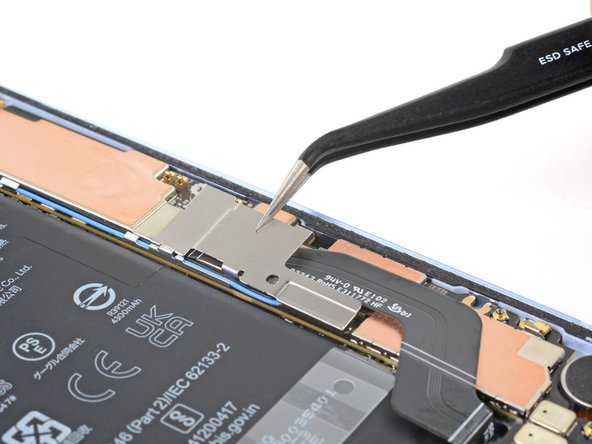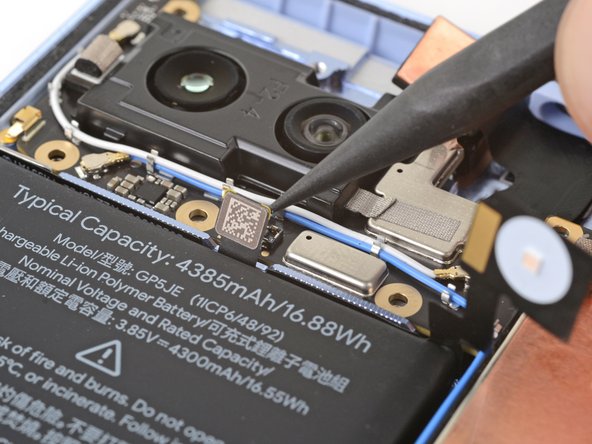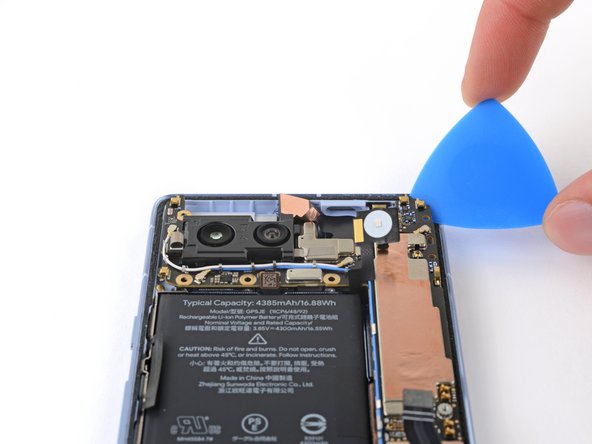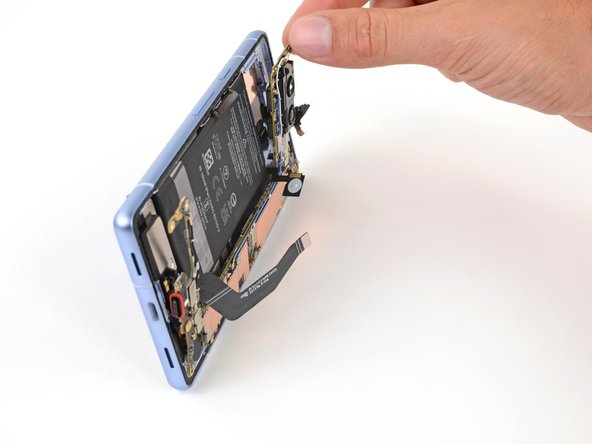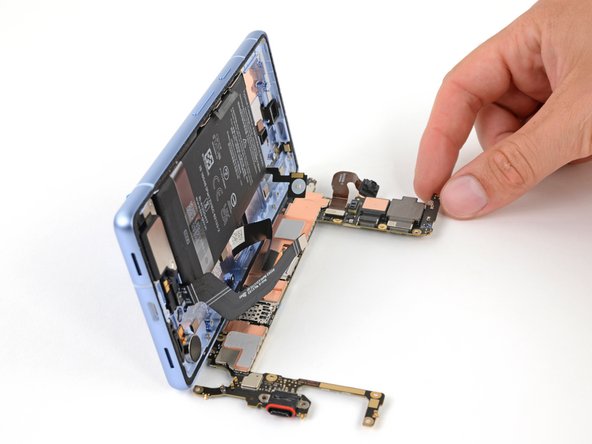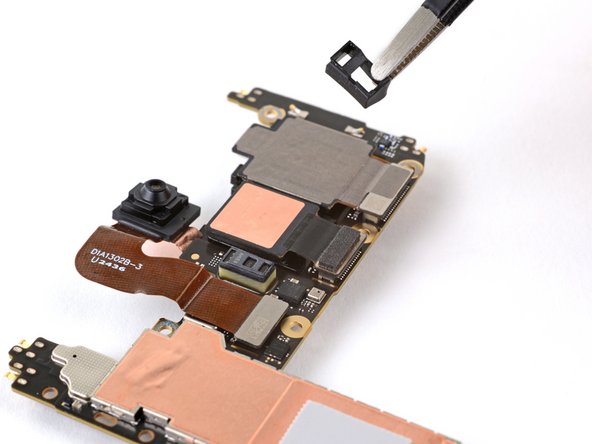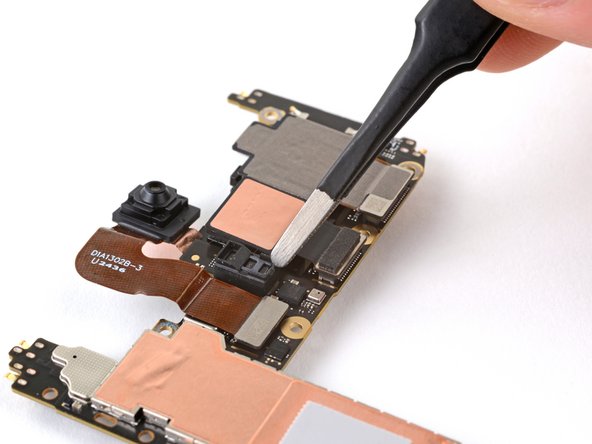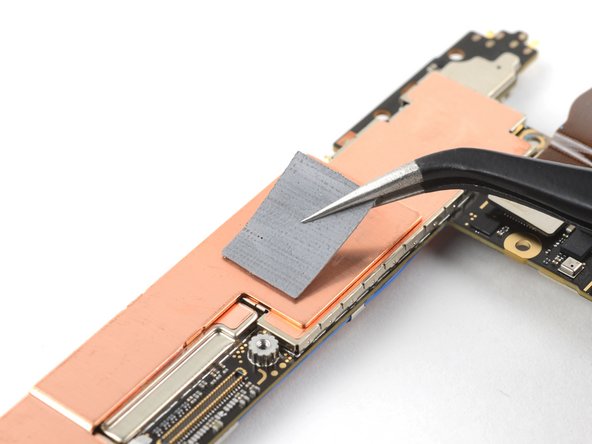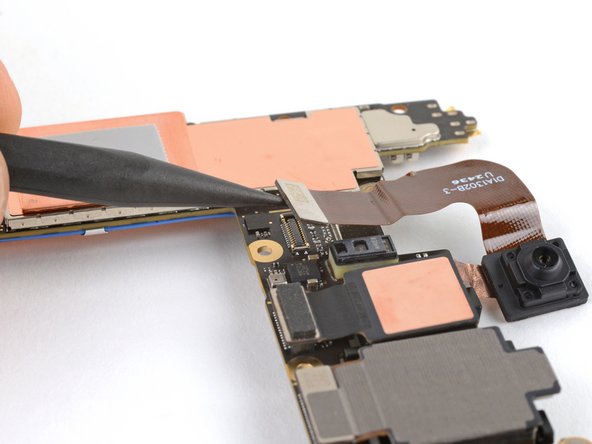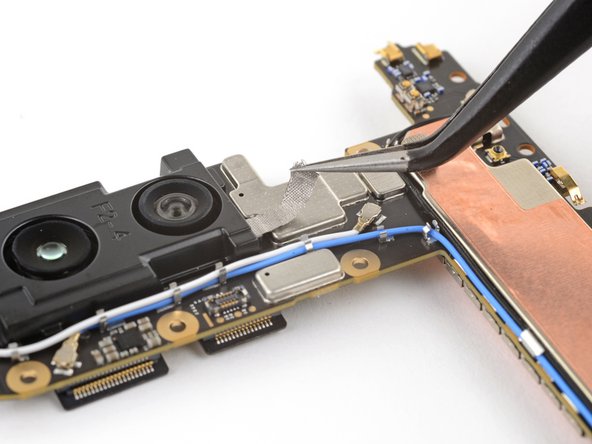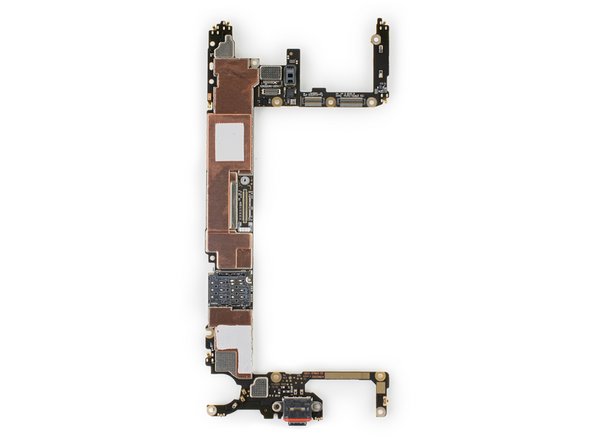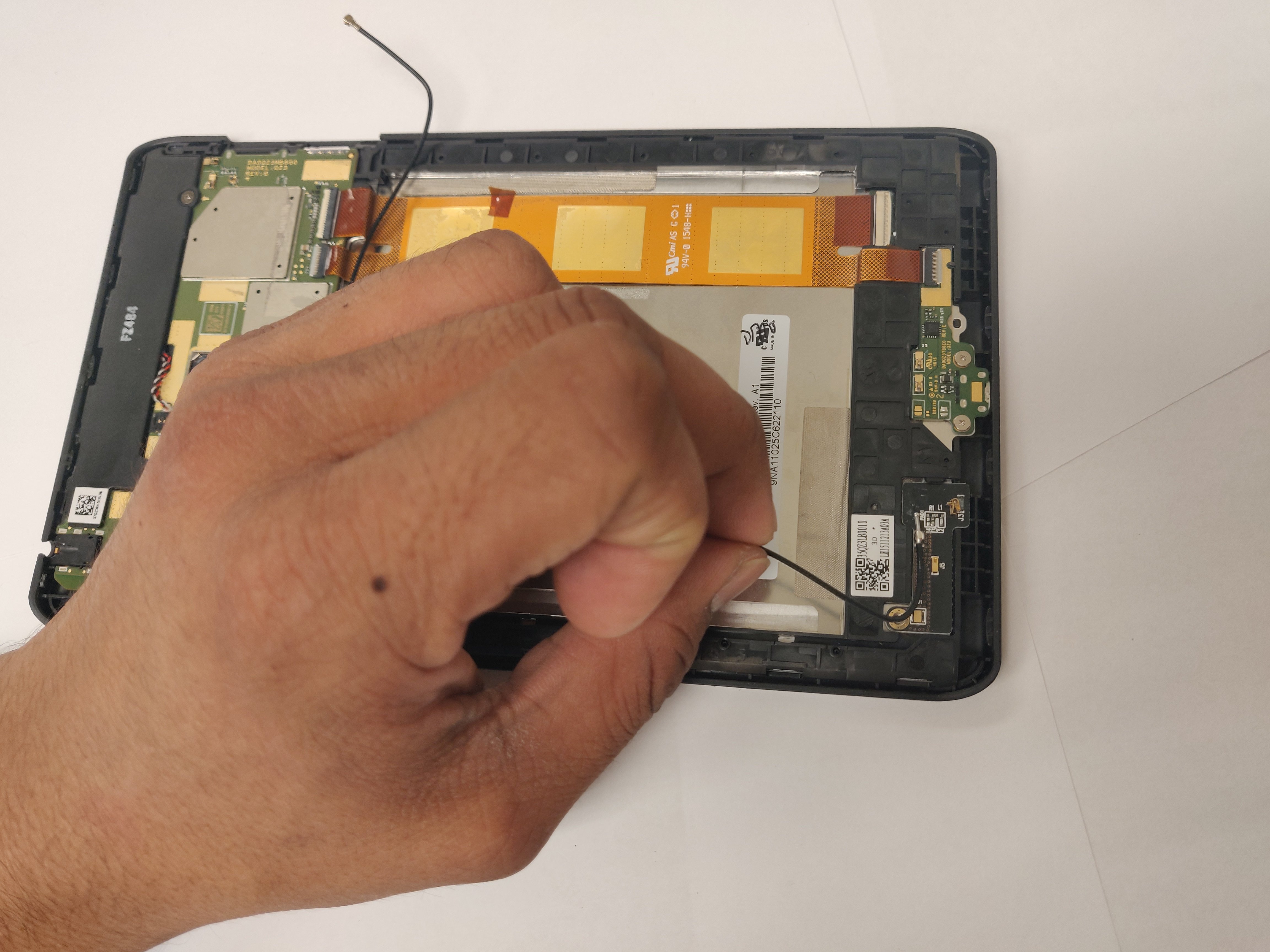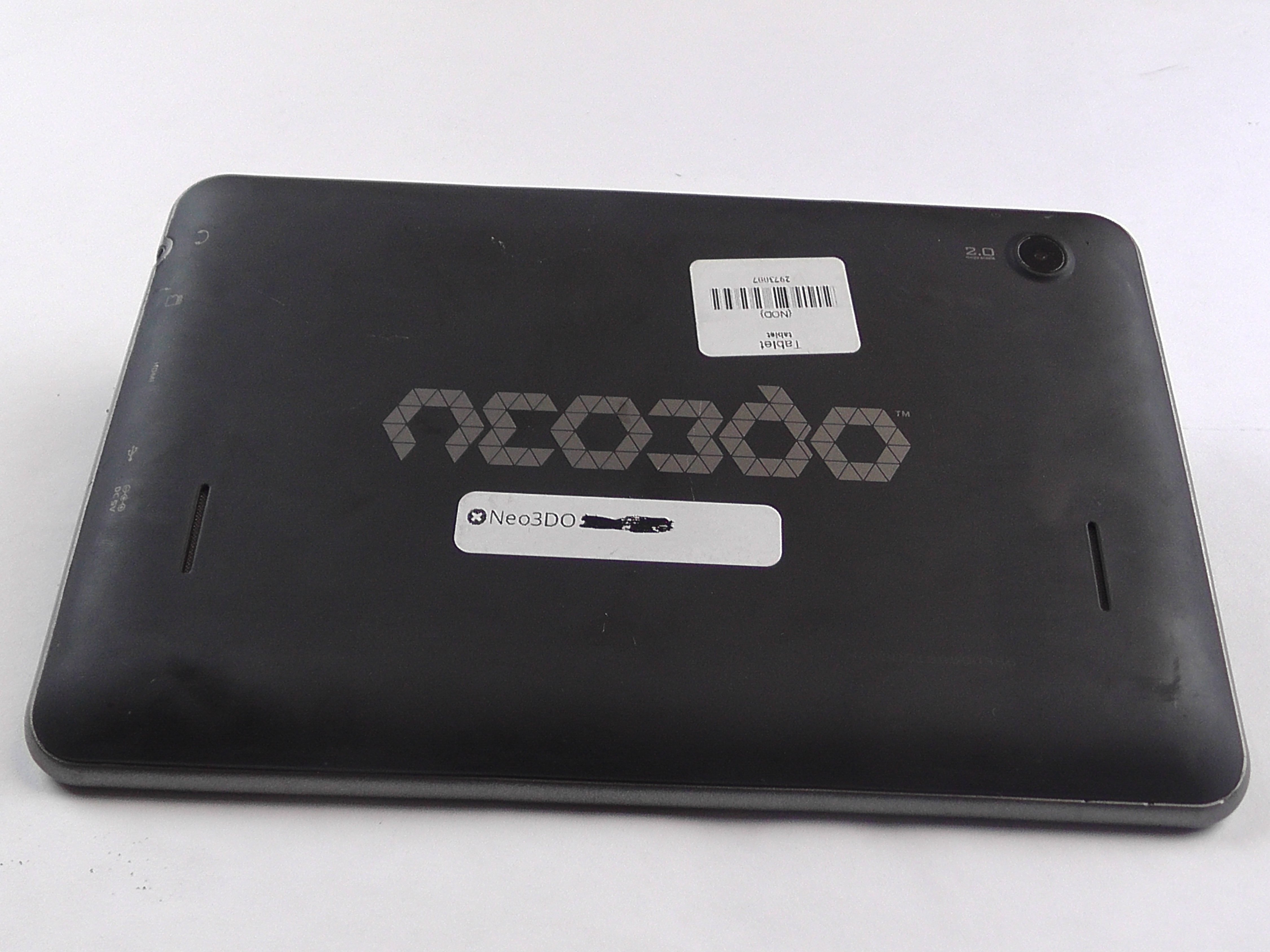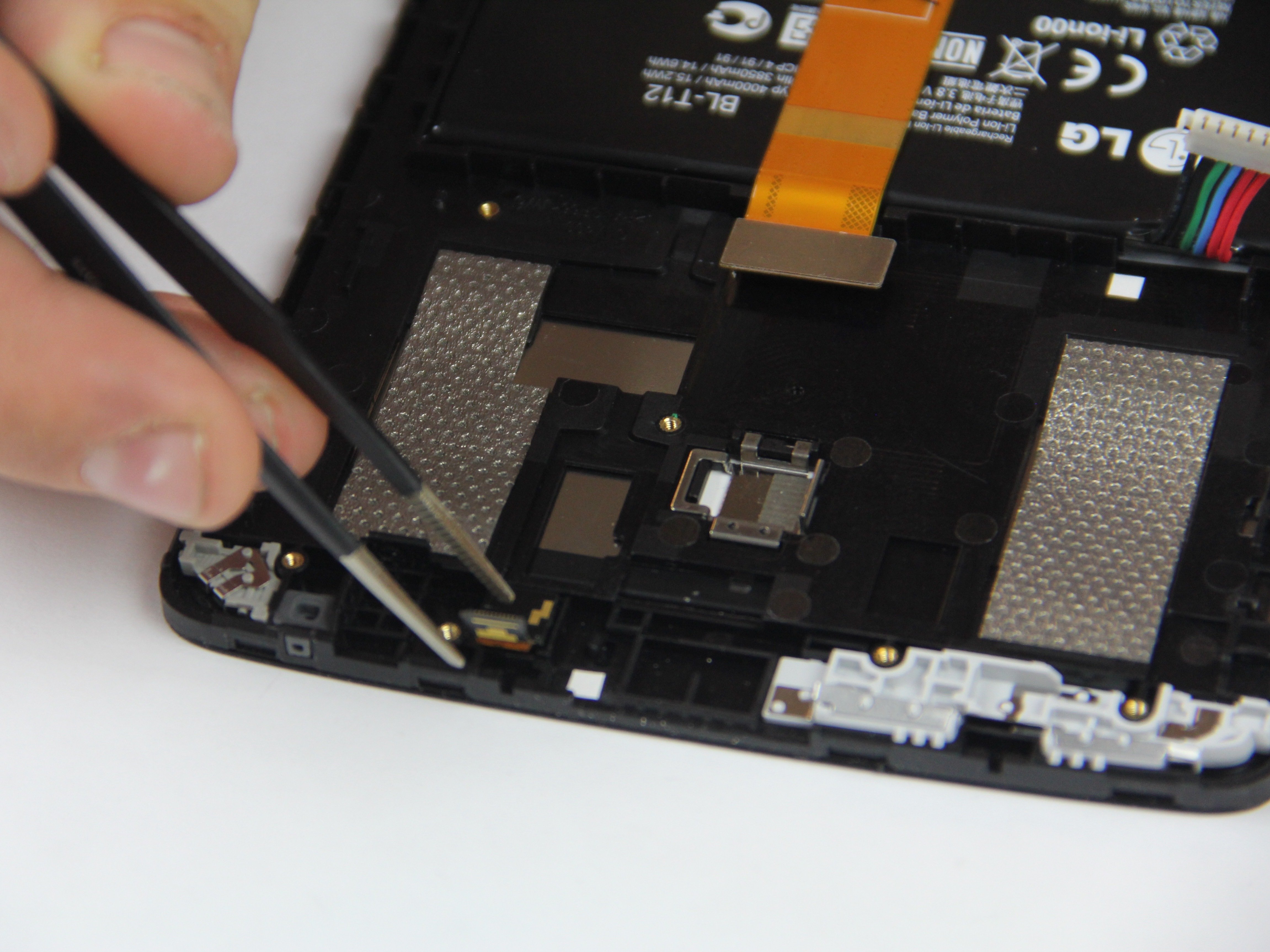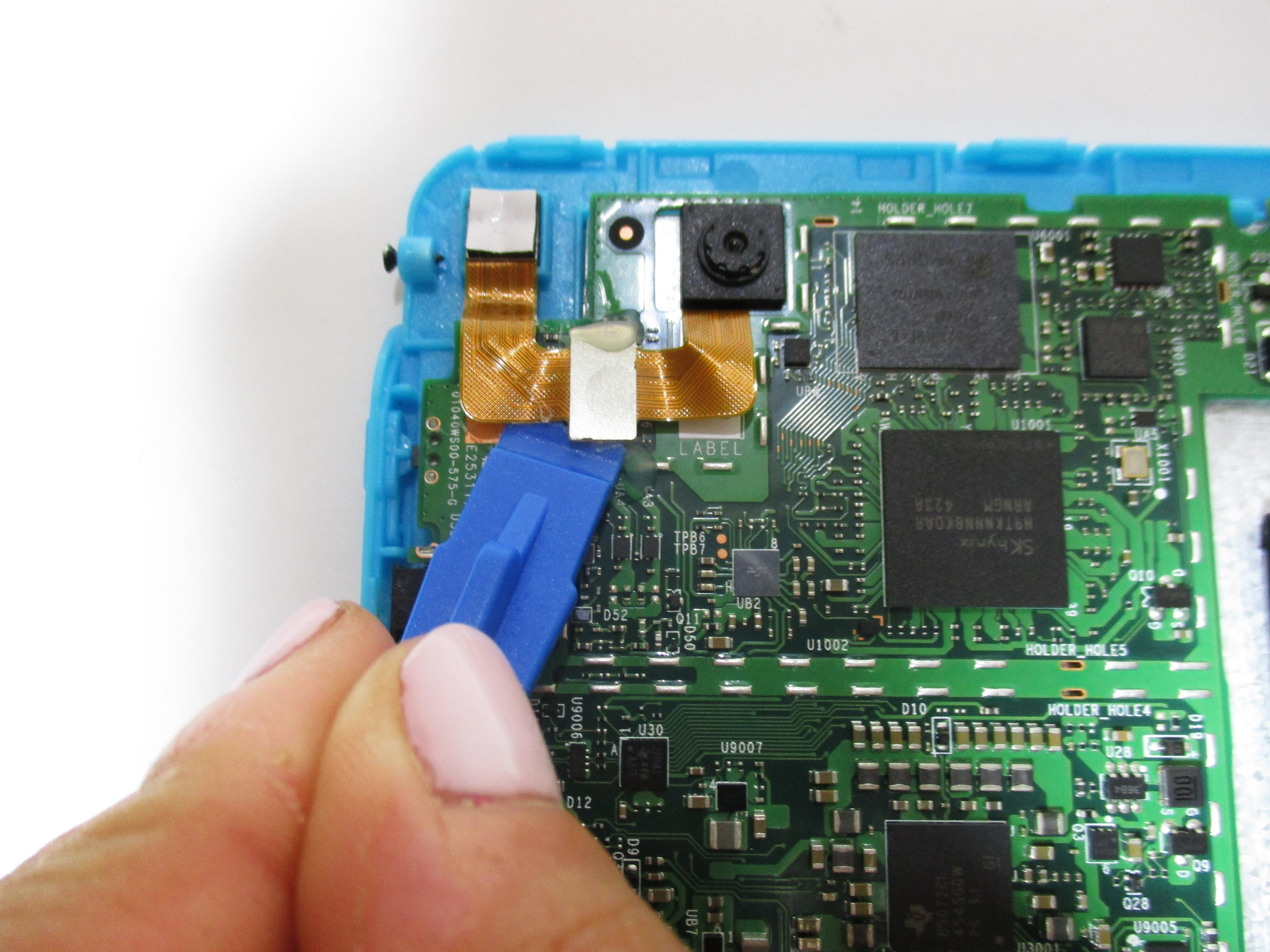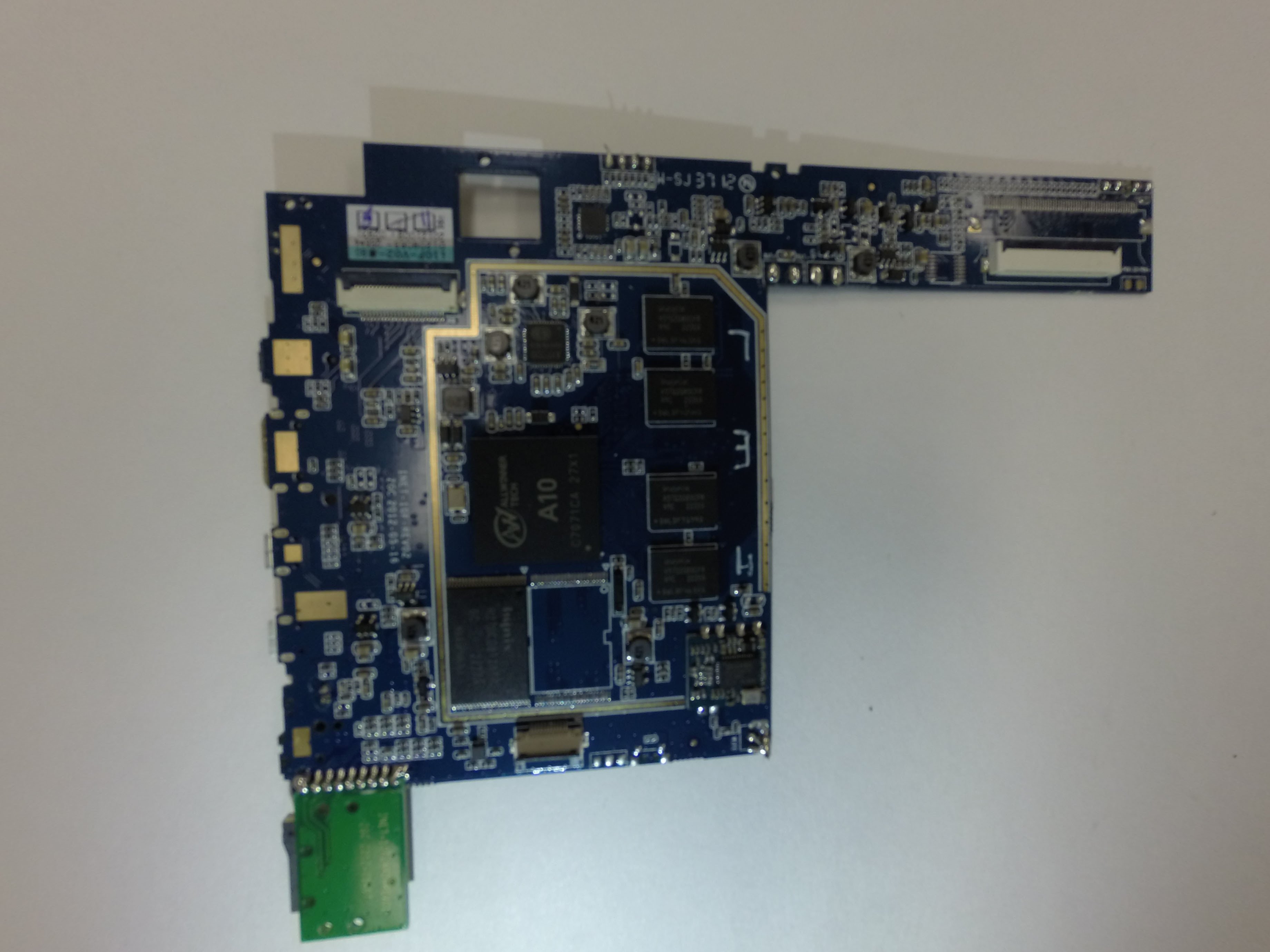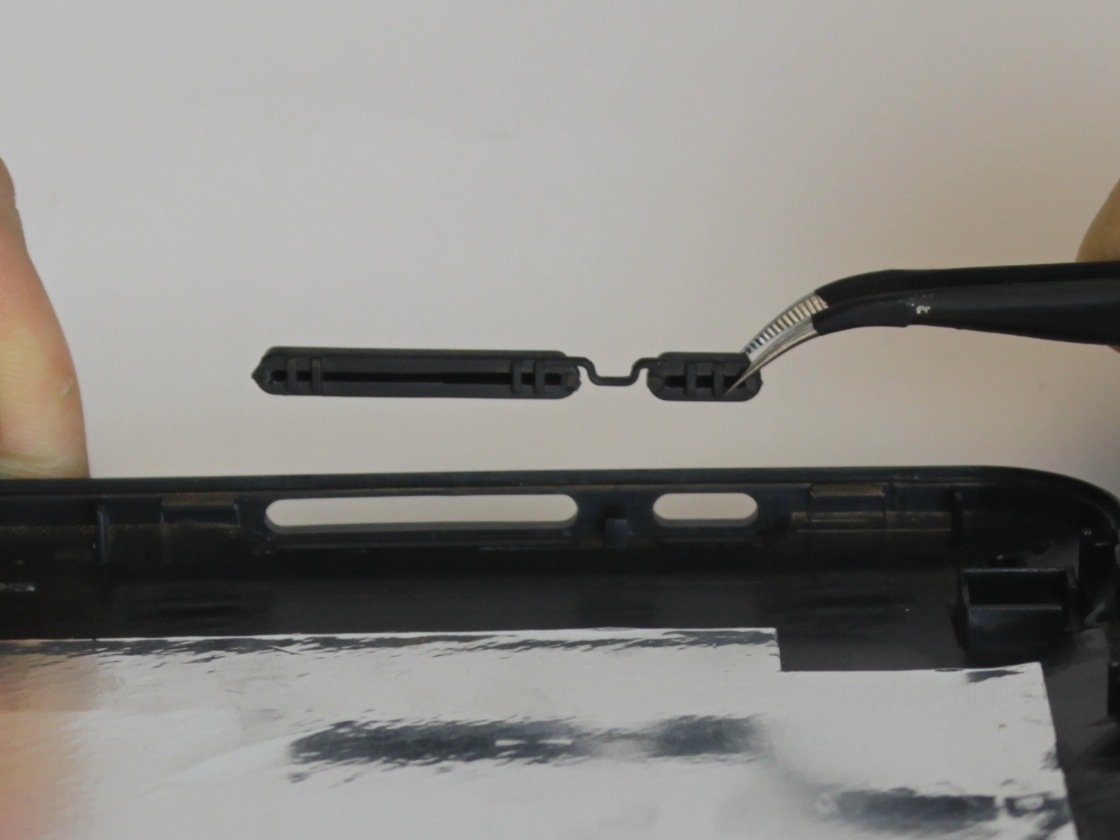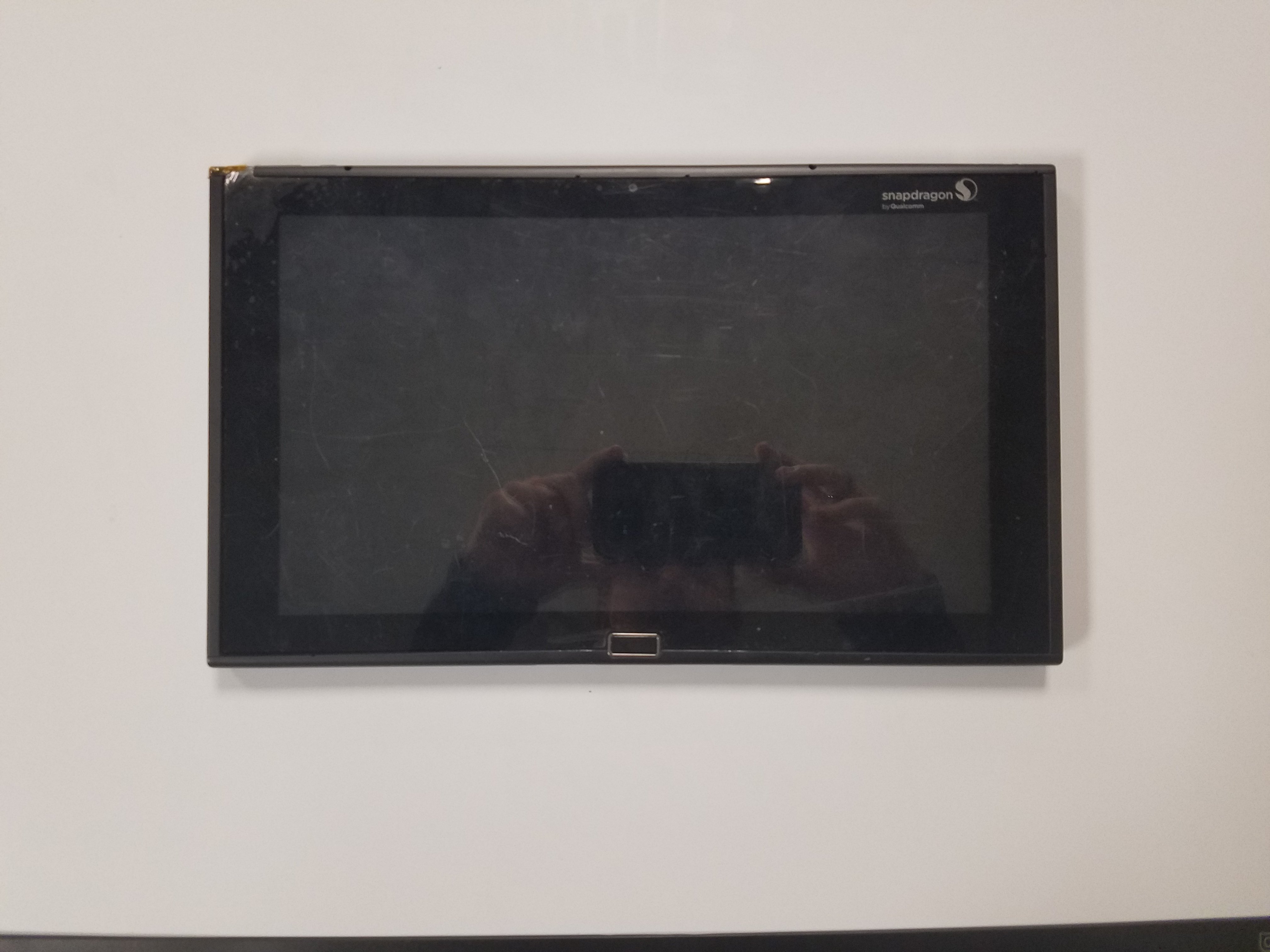DIY Google Pixel 7a Logic Board Replacement Guide
Duration: 45 minutes
Steps: 56 Steps
This repair guide was put together by the Salvation Repair team. If you need help, you can always schedule a repair.
Get ready to give your Pixel 7a a brand new brain! This guide will walk you through replacing the logic board, which is basically the phone’s central nervous system. You’ll be swapping out the in-screen front sensors, USB-C charging port, SIM tray slot, and lower microphone. If your battery looks like it’s trying to break free, take it easy and be careful – we don’t want any unexpected explosions! You’ll need some new adhesive to make everything stick back together perfectly. Just remember that any repair can make your phone a little less water-resistant, so make sure to get that adhesive nice and tight to keep things dry. If you need help with this, you can always schedule a repair.
Step 1
– First things first, unplug all the cables from your phone and give it a proper power down. You’re gonna want a phone that’s completely off for this step. Let’s get this show on the road!
Step 2
– Let’s get groovy as we extract that SIM card, shall we? First, you’ll need to find a bit, SIM eject tool, or trusty paper clip – you know, the usual tech detective tools. Once you have your chosen gadget, slide it into the SIM card tray’s access hole and gently push, as if you’re making a cool 70s dance move. The tray should pop out, revealing the SIM card itself. Strike a pose and remove that tray, now – you’ve got the midas touch of a smartphone repair whiz! If you need help, you can always schedule a repair.
Step 3
Just a little heat is all you need! Think of it like a warm hug for your phone, just enough to get things moving. Too much heat, though, and you might end up with a phone that’s not so happy. Keep it nice and toasty, but don’t go overboard! If you’re unsure, you can always schedule a repair.
Alternatively, why not give that rear cover a cozy warm-up with a hair dryer, heat gun, or a hot plate? It’s a friendly way to soften things up a bit before you dive into your repair adventure!
– Give that bottom edge of the rear cover a warm hug with a heated iOpener for three minutes. It’ll be just what it needs!
Tools Used
Step 4
Get ready to make your repair a whole lot easier with the Anti-Clamp, a handy tool designed to simplify the opening process. If you’re not using it, no worries – just skip ahead three steps for an alternative method.
Want the full scoop on how to use the Anti-Clamp like a pro? Check out our guide for all the details.
– First, let’s get this repair started! Pull that blue handle backward to unlock the Anti-Clamp’s arms – it’s easier than you think!
– Now, carefully slide the arms over the bottom edge of your phone. Make sure one suction cup is on the rear cover and the other is on the screen – you got this!
– Almost there! Squeeze those cups together to create some serious suction. If you need help, you can always schedule a repair
Step 5
– Pump up those repair skills and start by pulling the blue handle forward – this will lock the arms in place.
– Next, give that handle a clockwise turn – one full rotation (360 degrees) should do the trick. Keep going until the suction cups start to stretch out.
– As the cups stretch, make sure they’re aligned and playing nice with each other. If they’re being stubborn and slipping out of place, try removing the Anti-Clamp and adding some tape to help them stick together.
Step 6
The warm embrace of the iOpener is just the ticket to pop off that rear cover. However, it might get a little chilly while you’re busy setting up the Anti-Clamp. No worries—just give that cover a little extra heat if you need more time to get everything in place.
If that stubborn adhesive isn’t budging, give the handle a gentle clockwise twist for a quarter turn and hang tight for another minute. If things cool down, just whip out your hair dryer or heat gun for a little more warmth to keep the party going.
– Get your phone ready by placing it on a level surface, propped up with an object between the Anti-Clamp’s arms – this will keep it stable and secure.
– Now, be patient and wait about a minute, or until you see the adhesive start to separate and a gap form along the bottom edge of your phone.
– It’s time to get a little more hands-on – insert an opening pick into the gap between the rear cover and the frame, and gently start to pry them apart.
– You’re making great progress! Remove the suction cups from your phone using their pull-tabs, and set the Anti-Clamp aside for now. If you’re feeling stuck, don’t worry – you can always schedule a repair with Salvation Repair.
Tools Used
Step 7
Already got your opening pick in place using the Anti-Clamp? You’re a pro! Skip ahead, my friend.
– Place that trusty suction handle smack in the middle of the rear cover at the bottom edge.
– Give it a good, steady tug until you see a little gap forming between the cover and the frame.
– Slide the tip of an opening pick into that gap like a pro.
– Remove the suction handle, mission accomplished!
Tools Used
Step 8
– The rear cover is held in place with some sticky stuff all around the edges and close to the cameras. Check out this picture for a handy guide as you carefully slice through that adhesive.
Step 9
Now it’s time to get that rear cover off – just remember to keep those opening picks angled up and slicing away until it’s completely removed!
– Lift the opening pick so the tip is pointing away from the frame—just like giving it a little wave!
– Gently glide your pick down to the bottom left corner of the rear cover.
– Keep that pick right where it is to stop the adhesive from playing tricks and resealing.
Step 10
– Let’s get this party started! Insert a second opening pick in the bottom left corner.
– Now, slide that pick over to the bottom right corner of the rear cover to loosen things up. We’re separating the bottom edge adhesive.
– Leave that pick in place, keeping the adhesive from sticking back together. It’s like a tiny, brave protector.
Step 11
Want to loosen things up a bit? Try warming up the back cover with a hairdryer, heat gun, or hot plate. Just be careful not to get things too hot!
– Give that right edge of the rear cover a nice warm hug with a heated iOpener for two minutes. You’ve got this!
Tools Used
Step 12
Don’t go too deep with your pick! Keep it under 5 mm along the right edge to avoid messing with the wireless charging coil.
Hey, wanna make sure you’re on the right track? Grab a permanent marker and mark your pick 5mm from the tip. That’ll help you out!
– Grab a third opening pick and gently slide it into the bottom right corner of the rear cover.
– Now, glide your pick along the right edge of the rear cover to break that stubborn adhesive seal. Pause once you hit the camera bar.
– Keep that pick right there to stop the adhesive from sticking back together. You’re doing great!
Step 13
As an alternative, grab a hair dryer, heat gun, or hot plate to gently warm up that rear cover. Just be careful not to turn your phone into a hot potato!
– Warm up that left edge of the rear cover with a heated iOpener for a couple of minutes. It’s like giving your phone a little spa treatment!
Tools Used
Step 14
Whoa there, pick pal! Keep your pick away from the 3 mm mark on the left edge. Don’t wanna mess with the wireless charging coil or the rear cover foam, ya know? Let’s keep this repair fabulous!
Want to make things super easy? Mark your pick 3mm from the tip with a permanent marker. That’ll help you keep track and make things a breeze!
– Grab a fourth opening pick and slide it into the bottom left corner of the rear cover like a pro!
– Gently glide your pick up the left edge of the rear cover to separate that pesky adhesive. Stop when you hit the camera bar—it’s like finding a secret checkpoint!
– Keep that pick right where it is to stop the adhesive from making a comeback. You’ve got this!
Step 15
To loosen up that rear cover, try warming it up with a hair dryer, heat gun, or hot plate. Just be careful not to get it too hot – we want to fix your phone, not cook it! If you’re feeling stuck, remember that Salvation Repair is here to help.
– Heat things up by applying a heated iOpener to the top edge of the rear cover for about two minutes. This will help loosen things up and make the repair process smoother.
Tools Used
Step 16
There’s a sturdy layer of adhesive around the antenna housing.
If the pick doesn’t slide in, kick things off with the small gap next to the camera bar from the previous pick.
– Pop that fifth opening pick into the top left corner of the rear cover, about 8-10mm (0.3-0.4 in) deep—just over halfway between the pick’s tip and our logo.
– Now, slide that pick halfway along the top edge to separate the antenna bracket adhesive. Stop once you’re halfway across the top edge.
Step 17
Keep your pick to a maximum depth of 3 mm to steer clear of any mishaps with the antenna housing’s graphite tape. You’ve got this!
– C’mon, you got this! Now, pull out your opening pick 3mm deep and then slide it to the top right corner while you slice the remaining adhesive with a fun dance move. Almost there, champ!
Step 18
Keep your picks angled upward and away from the frame as you work through this step. You’ve got this!
– Hey there! It’s time to show off your pick-rolling skills. So, let that top edge pick get flat under the rear cover, and don’t forget to have your pals, the picks, roll on each side of the camera bar. They should have their flat edges under the camera bar. Keep the party going and you’ll be all set!
Step 19
Don’t worry about bending the back cover, just give it a little wiggle to loosen the glue around the camera. If it’s being a bit stubborn, just rotate the back cover a little to get it going.
Alright, there’s this long strip of adhesive holding the back cover on, just below that camera bar.
– Slide those trusty opening picks right under the camera bar and give the top edge of the rear cover a gentle nudge away from the frame.
– Rock it back and forth, and before you know it, that camera bar will be as loose as a summer flip-flop!
Step 20
– Let’s get those opening picks sliding! Gently work them from the camera bar down the long edges of the rear cover. You’re basically saying ‘buh-bye’ to any stubborn adhesive that may have gotten cozy in there.
Step 21
– Let’s kick things off by removing the rear cover. It’s like unwrapping a surprise!
– Now, during our little reassembly dance:
– Why not give your phone a quick test drive before sealing it up? Turn it on and make sure all systems are go. Just remember to power it back down before we get back to the fun of reassembly.
– Follow this guide to put on some fresh adhesive and snugly install that rear cover back in place. You’ve got this!
Step 22
Just give the flash a little warm-up, like you’re getting ready for a date. Don’t overheat it though, those battery and surrounding components are pretty sensitive!
Want to get that flash nice and toasty? Try using a hair dryer or heat gun to gently warm it up.
– Heat up your trusty iOpener and give the flash unit a warm-up session for one minute. This will help loosen the adhesive that’s holding it tight against the logic board cover, making it easier to get things moving.
Tools Used
Step 23
Careful! This flash cable is super delicate. You don’t want to accidentally rip it. Take your time and be gentle.
– Gently slide your pick beneath the right edge of the flash to break the adhesive that’s holding it to the cover. You’re doing great!
Step 24
– If the copper tape lifted away with the flash, no worries! Just grab your tweezers (or your fingers if you’re feeling brave) and gently remove the black foam residue from the logic board cover. It’s like cleaning up after a party, except way less messy!
Tools Used
Step 25
Hey, be careful with that tool around the battery! We don’t want any unexpected sparks, right? Take it slow and steady, and you’ll be just fine.
Let’s keep that copper tape on its lively journey away from the logic board cover. If you had a tight-knit buddy who offered a fresher batch of tape, now’s a groovy time to use it!
– Warm up the underside of the flash for a minute using a heated iOpener. You know, like a warm hug for your phone’s flash.
– Keep the flash cable steady and use some tweezers to peel and remove the copper tape from the flash. It’s like giving the flash a little makeover!
Step 26
– Let’s get started by removing the thirteen 4.3mm screws that hold the logic board cover in place – grab your trusty 3IP Torx Plus driver and get to work!
– Next, use a 1IP Torx Plus driver to carefully remove the 1.5mm screw that’s securing the right edge of the cover. You’re making great progress!
Hey there, champ! Your Pixel 7a uses Torx Plus screws, but don’t sweat it, your standard Torx screwdriver might just do the trick. If you’re rocking standard Torx bits, use the T2 bit for those 1IP Torx Plus screws and the T3 bit for the 3IP Torx Plus screws. Remember to apply steady, downward pressure to avoid stripping those little guys! Now, you’re gonna be a repair rockstar!
Step 27
– Slide an opening pick into the bottom right corner between the logic board cover and the frame, just like a ninja slipping through a door.
– Gently pry it up to free the clip holding the cover in place – it’s like giving it a little nudge to say, ‘You’re free!’
Step 28
– Gently lift the top edge of the logic board cover while carefully guiding the flash unit through its designated cutout. You’ve got this!
– As you’re putting everything back together, don’t forget to thread the flash through its cutout before settling the logic board into place. Easy peasy!
Step 29
– Time to ditch the wireless charging assembly – carefully remove it to move forward with your repair.
Step 30
– Let’s get started! Use your trusty 1IP Torx Plus driver to remove the 1.5mm screw that’s holding the connector cover in place.
– Now it’s time to get a little hands-on – use tweezers or your fingers to gently remove the cover.
– When you’re putting everything back together, make sure to tuck the upper left corner of the cover under the hook on the logic board before securing it with its screw.
Tools Used
Step 31
Hey there! The Verizon Pixel 7a (G0DZQ) comes with an extra cable and connector for the 5G mmWave antenna. No worries though, everything else in this guide is the same for both types of phones. Let’s get started!
Step 32
To get that connector back in action, line it up with the socket and give a gentle push on one side until you hear a little click. Then, work your magic on the other side. It may take a few attempts to get everything lined up just right, but you’ve got this!
– Let’s get this battery connector unplugged! Slide the flat end of your trusty spudger under the top edge of the connector.
– Now, gently pry straight up to disconnect that connector. You’re doing great!
Tools Used
Step 33
– Time to get started! Use your trusty 3IP Torx Plus driver to carefully remove the 4.3mm screw that’s holding the earpiece speaker in place on the frame.
Step 34
– Grab the bottom edge of the earpiece speaker and give it a gentle lift.
– Now, pull the speaker towards the bottom of the phone. You’ll see the red gasket come loose from its spot in the frame.
– Time to remove the speaker! You’re doing great!
Step 35
– Let’s get those screws out of the way! Use your trusty 3IP Torx Plus driver to loosen the two 4.3 mm screws holding the antenna housing to the frame.
– When putting it back together, make sure to hold that housing down tight while you fasten those screws. It’s like a little dance, right?
Step 36
– Slide an opening pick between the top left corner of the antenna cover and the frame.
– Gently pry up to pop the clips holding the cover in place.
– When putting it all back together, keep the graphite film aside before placing the cover back in.
Step 37
– Give that antenna housing a little lift from the bottom, and gently pull the top edge out of the frame. You got this!
– Now, go ahead and remove the housing. You’re doing great!
Step 39
Another option is to break out your trusty hair dryer or heat gun to gently warm up that pesky adhesive. Just give it a light touch until it feels cozy, not overheated!
– Warm up that iOpener and give the front-facing camera a nice, cozy one-minute heating to loosen up the copper tape adhesive.
Tools Used
Step 40
Handle the rear camera lenses with care; they’re sensitive little guys!
If the tape seems a bit grumpy, grab a trusty sharp tool like some angled tweezers and gently lift the edge of the tape so you can sneak in a pick underneath.
– Slide the tip of an opening pick under the front-facing camera’s copper tape. It’s like giving the tape a little tickle!
– Carefully peel the tape up from the logic board. You’re almost there, keep going!
Tools Used
Step 41
Hey there, champ! Keep that tool away from the front-facing camera lens. You wouldn’t want to give your device a case of blurry-vision, would you? 😉
If the pick won’t budge under the cable, don’t sweat it! Just grab a hair dryer or heat gun and gently warm up the cable to loosen the adhesive underneath. It’s like giving the cable a little wake-up call to make it more cooperative.
– Carefully slip the tip of your trusty opening pick between the right edge of the front-facing camera cable and the frame – it’s a tight spot, but you’ve got this!
– Now, gently slide your pick underneath the cable to loosen the adhesive that’s holding it in place. You’re making great progress!
Tools Used
Step 42
Buddy, be a bit more gentle with those camera lenses, alright? You’ll want to make sure you’re not smudging anything there and ruining the show!
This connector is a busy bee! It handles the power button, volume buttons, flash unit, and upper microphone.
– Ready to rock ‘n’ roll? It’s time to gently lift that little latch on the battery connector! Make sure to be careful not to accidentally pull on any cables while doing so. We don’t want any accidents, now do we? If you’re feeling stuck or unsure, don’t be afraid to ask for help! If you need a little extra support, you can always schedule a repair.
Tools Used
Step 43
– Slide your opening pick between the top right edge of the logic board and the frame. We’re gonna get this logic board out of its little home!
– Pry up gently to free the logic board. It’s like giving it a little hug to say goodbye.
– Now, slide your pick into the gap near the white antenna cable. Time to pry up the top left edge of the logic board! We’re almost there.
Step 44
Handle the logic board with care – it’s more delicate than it looks! While freeing the lower edge from the frame, just remember: no bending allowed!
Hold on there! Don’t completely detach the logic board yet, it’s still holding onto the frame by the screen cable. Let’s keep it connected for now!
Don’t let the flash, front camera, or press connector get trapped under the frame. Keep it smooth and easy!
– Gently lift the top edge of the logic board away from the frame.
– Carefully pull that same edge to the right, so the cutouts on the board glide over the vibration motor and any little frame protrusions.
– While you’re at it, guide the charging port out of its cozy home in the frame.
– When it’s time to put things back together, slide the logic board toward the bottom of the frame and press down on the charging port until the bottom edge sits flush with its snug spot in the frame.
Step 45
Keep that logic board steady – it’s like holding a fragile egg! Avoid gripping it near the camera lenses or connectors, okay?
Be gentle with the thermal pads on the underside of the logic board. We don’t want any accidental damage in this step.
If a suction handle isn’t in your toolkit, no worries! Just lean your phone against something solid like a hefty box or a thick book. You’ve got this!
– First things first, grab your suction handle and place it on the left side of the screen, making sure the handle is facing down. You’re going to need a good grip!
– Now, give your phone a little boost and prop it up so it stands tall and proud.
– Gently tilt the logic board downward and lay it flat. Feel free to move any pesky cables out of the way if they decide to be in your path.
Tools Used
Step 46
– Grab your trusty 3IP Torx Plus driver and use it to remove the 2mm screw that’s holding the screen connector cover in place.
– Now it’s time to take off the cover – easy does it!
– When you’re putting everything back together, make sure to hook the bottom edge of the cover into its slot on the logic board before screwing it back in.
Step 47
– Use the flat end of your spudger to gently pry up and disconnect the screen press connector. It might feel a little stubborn, but don’t worry, you got this!
– This cable can be a little tricky to reconnect, since it’s got some tension. If you need a little extra help, grab some tweezers and hold the neck of the cable in place while aligning it over the socket. Then give it a gentle press to secure it. You’re doing awesome!
Step 49
Keep your fingers and tools away from the sensor; it prefers a little personal space!
– Hey, if that front sensor rubber gasket decided to stay on the frame or got a little out of whack, just go ahead and pop it off and set it aside. We’ll get it back in its place in a jiffy.
– When you’re putting things back together, place the gasket over the front sensor on the logic board, with the smaller cutout facing the top. It’s like giving your device a little hug!
Step 50
– Alrighty, now in the realm of fun and groove, you’re all set to rock n’ roll with this thermal pad action! If you’ve got a logic board that’s seen better days, whip out that old thermal pad, give it the heave-ho, and prep the surface for a fresh new start. And if you’re working with a brand-spankin’ new logic board, no thermal pad? No sweat! Just slap that new one on and let’s get this party started!
Step 52
– Take out the front-facing camera with care.
Step 53
– Time to get those rear camera press connectors disconnected from the logic board! Use the flat end of your trusty spudger to carefully pry them up and set them free.
Tools Used
Step 54
Hey, take a minute to check out your work space. If it’s messy or wobbly, just lay that logic board down on a towel or lint-free cloth to keep things tidy and safe. You’re almost there!
– Let’s give that logic board a little twist – flip it over gently.
– With your trusty tweezers, carefully peel back the silver conductive fabric that connects the rear camera bracket to the logic board. It’s like unwrapping a surprise!
Tools Used
Step 55
That little logic board arm is super sensitive! Just be gentle when you’re putting the rear camera assembly back together.
– Time to get started! Remove the rear camera assembly – it’s the first step towards a good-as-new device.
– Now, let’s put everything back together. When reassembling, make sure to angle the assembly downward so those press connectors fit snugly under the logic board, and the tab on the left of the bracket slips nicely above the logic board.
Step 56
– Put your device back together by following these steps in reverse order, just like a super cool secret agent reversing their mission!
– Need to make sure everything’s working like a champ? Check out the built-in diagnostic tool by clicking here.
– When you’re done with your device, make sure to recycle it responsibly. Find an R2 or e-Stewards certified recycler near you. It’s the eco-friendly way to go!
– Things not going quite as smoothly as you’d hoped? No worries! Try some basic troubleshooting tips, or ask our awesome Answers community for help.
– Cancel: No worries, you can always schedule a repair if you need a little extra assistance.
–
Success!










































































